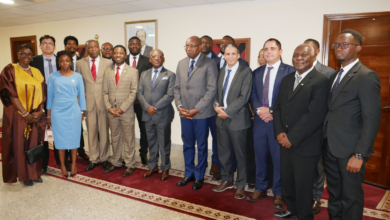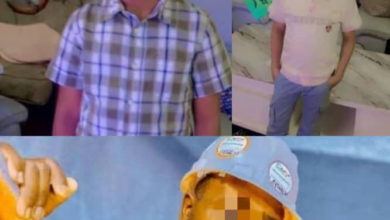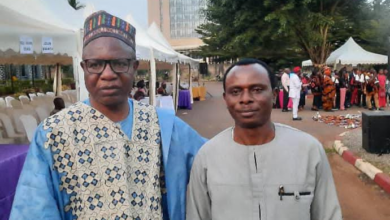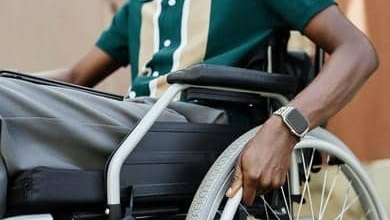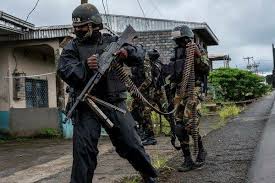
Prof. Uwem Essia writes…
“Make women key players in the traditional councils that should be the beginning point of the proposed state decentralization reforms“
This recommendation is one amongst the many he gives to silence guns in warring Cameroon. His 10-page piece outlines contributing factors to the war and proposes what can be done to solve it.
1. Scars and Stigma of Africa’s Senseless Wars
Insurgencies waged by stateless Armed-Youth Groups (AYGs) is now a common feature in many African Union (AU) member states. Whether as armed robbers, kidnappers, separatist fighters, ethnic militias (fighting neighbouring communities), religious fundamentalists, and fighters involved in farmer-herder conflicts, or cattle rustlers, African governments are compelled to waste scarce resources on arms and ammunitions. This is added to the loss of lives, displacement of populations, and wanton destruction of property and infrastructure. Recent evidence from the Uppsala University Conflict Data Program estimates that 15,000 people were killed in violent conflicts in Africa in 2018 largely in Nigeria (with highest recorded deaths), Somalia, the DRC, the CAR and Mali.
At the AU 50th anniversary celebration in 2013, violent conflict was identified as a major impediment to the implementation of Agenda 2063 and, before leaving Addis Ababa, AU leaders resolved not to pass the burden of conflict to future generations. Hence Silencing the Guns (STG) in Africa by 2020 was adopted as a flagship project of the wider development blueprint Agenda 2063. In March 2019 at the African Regional Conference in Morocco, Amina Mohammed the UN Deputy Secretary-General reiterated that ending protracted violent conflicts is essential for Africa’s future since in her words, “we cannot have sustainable development without sustaining peace.”
It is broadly accepted, however, that conflict is a normal aspect of human life. But conflict need not become violent, and violent conflicts do not have to become protracted and intractable. The key thing is to identify the issues causing the violent conflict and make efforts to resolve them on time. People and groups will always have reasons to agitate. Indeed a society without economic, social and political disparities and disputes exist only in the realm of imagination. Homogeneous groups will eventually become heterogeneous. Once a smaller segment begins to accord certain advantages to others and disadvantages to themselves, then a party will naturally feel disadvantaged or marginalized. However, no conflict is beyond being resolved, and nearly all conflicts offer opportunities for innovations that can benefit rival parties when the larger picture is considered. Accordingly, the most practical way to silence the guns is to remain committed to dealing with the underlying structural factors causing protracted violent conflicts in African countries. This will reduce both the demand for new guns and the need to fire the available guns.
2. Weighing Options to Adopt: Supply Vs Demand Reduction Strategy
A study conducted by a Geneva research group, the Small Arms Survey (SAS) and funded by the AU estimated that 50 million small arms and light weapons were in Africa in 2017. Only 20 per cent of these were held by the official forces, while the rest was in the hands of non-state armed groups, private security businesses, and individuals. Reducing the supply of illegal arms in African countries is difficult as many are smuggled in through porous borders while others are produced locally. Also oftentimes arms/ammunition stocks of the official forces are raided, and members of official forces killed and their weapons carted away. Equally, corrupt elements in the official forces are sometimes compromised to sell/rent their arms to non-state armed groups. Therefore while efforts to reduce the supply of arms to unauthorized persons is intensified, focusing as well on reducing demand for guns will ensure that guns are silenced faster.
For Amb. Cessouma Minata Semate, the African Union Commission (AUC) Commissioner for Political Affairs, a program to reduce demand for guns must directly tackle the structural causes of violent conflicts in Africa. Amb. Ramtane Lamamra, the AU High Representative on STG, at the Pan African Parliament held on November 28, 2019, opined also that peace, security and socio-economic development should be pursued simultaneously. He strongly recommends that AU member states develop national action plans on STG. The STG national action plans, he insists, should ensure the inclusion of women and youth as key players. Equally, Mrs Aissatou Hayatou, the STG Operations Manager observes that “It is not just about guns, it is about what drives people to resort to guns. We need to address those underlying issues.” For her, youth unemployment is a key challenge since about 600 million young Africans are unemployed, uneducated or in insecure employment.
3. Framework for Analyses
To be result-oriented and realizable the national action plans for STG must shift from the bandwagon of focusing excessively on economic development, to a more comprehensive view of development that encompasses human, economic, sociocultural, political and religious aspects. For example, it is simplistic to assume that offering members of AYGs employment opportunities are that single bullet to make them drop their guns. Such industrial age thinking has become defunct and unsustainable in today’s knowledge economy. What today’s government can sustainably do is to nurture, promote and support (through appropriate policies, reforms and institutional contrivances) a business environment that offers adequate participation spaces/entry points or opportunities for individuals, organizations and groups to contribute to development, which includes but is by no means limited to creating jobs.
Secondly, as important as economic considerations may seem, the undue colonization of development thinking by economics is itself responsible for what I refer to here as the foolishness of today’s knowledge societies. For instance, it is hard to explain why many advanced countries are selling arms illegally to non-state groups in Africa and elsewhere (ostensibly because it is highly profitable), not minding the high risk of the insurgents armed and trained by them attacking their territories and or citizens someday. Viewed critically some decisions that make economic sense are hardly reasonable when the ceteris peribus clause is removed and the other factors kept constant considered.
More seriously, Africans need to rethink the wholesale adoption of the western development model that is broadly individualistic and vindictive, unduly competitive, and blindly profit-seeking. Our ability to make real progress will depend on how well we can balance the mix of economic, sociocultural, religious and political development and while doing so take the best of other systems, without jettisoning the good aspects of our traditional heritage. Hence it is noteworthy that the AU Master Roadmap of Practical Steps to STG (also known as the Lusaka Roadmap 2016) identifies an extensive array of political, economic, social, environmental and legal factors as contributors to conflict or impediments to action. The Roadmap also emphasizes the importance of having national action plans, with functional implementation mechanisms, and political will.
Thirdly, there has to be an optimal mix of retributive and restorative justice for members of the AYGs, with the balance skewing towards the later. More specifically helping as many members of the AYGs as possible to transit from criminality to become productive citizens will sustainably reduce the demand for guns. Criminals/insurgents are not born but made and, structurally speaking, violent crimes among children/youths are fallouts of perceived deprivation, neglect, and marginalization, and general dissatisfaction with how their communities or societies are run. In other words, many children/youths currently engaged in violent crimes will participate and contribute productively in mainstream society if the participation spaces that will help them attain their aspirations exist and are accessible to them.
Noting the above, it is clear that most peacebuilding/conflict resolution programming is far from being comprehensive and realistic. Oftentimes the immediate concern is to get the agitating parties to accept a ceasefire, and once that is done the key issues causing the crises are hardly addressed adequately. Many promises made are jettisoned, and in some cases, it is considered that the non-state armed group is conquered. This half-done or piecemeal approach is largely responsible for the resurgence of several wars/violent conflicts and the reason for their intractability.
4. The Internet Revolution and Post-Modernist Conflict Dynamics
The social media revolution (powered by the internet) has brought the activities of government and the personal lives of top politicians to full public glare. Citizens and civil society organizations more than ever before demand openness, transparency, and accountability from their governments. Citizens’ protest is increasingly fearless, ambitious and lethal. Silencing the population with military force is becoming more challenging because many within the civil population are armed, albeit illegally. The Arab Spring, the fall of Gadhafi’s Libya, the overthrow of Sudan’s Omar Bashir, and a host of other unpredictable events attest to how daring the civil population in many African countries has become.
Of serious concern is how social media is influencing the conduct of children/youths and the aspirations they build for themselves. Young people are becoming independent of their families, schools and traditions too early; they now learn more from their peers and online influencers, and the knowledge/information gained can swing to the negative or positive side depending on how they perceive conditions around them. While it may be difficult to classify young people by how they utilize the internet, there is a high likelihood that youths in good schools and or having jobs (in high paying establishments or self-employed) are more likely to use the internet for further learning, and sharing work and leisure related content. But out-of-school and lowly skilled youths (oftentimes poorly paid, unemployed or seasonal workers) will likely have enough time to follow rumours, unconfirmed reports and other contents that may serve as avenues for indoctrination and self-embitterment.
Thus, the social media is helping many young people to form aspirations of how they desire their future to be, and most disadvantaged children/youths are predisposed to building their aspirations around social media idols, peers and role models. What is challenging about it is that only a few of them are realistic about their aspirations. Most of them strive to live by the pictures of what they consider is the good life for them (thanks to the social media), but lack the means to achieve them. So they have to hustle, as it is commonly expressed, to realize their aspirations. Hustling is a term used to describe whatever extra that is done to make ends meet; including doing multiple jobs, begging, stealing-by-tricks, and engaging in sex-for-livelihood, scamming, or taking bribes. Among the hustlers are some class of people, largely youths, who add violent crimes to their hustling activities. These set of youths are described by different names in different areas/countries. In Nigeria, they are commonly referred to as area boys.
The area boy syndrome is common in most rural and peri-urban areas of Africa, and they easily transform to AYGs. What is worrisome about area boys is the absence of any form of centralized authority or control, making it difficult to apprehend or track them. Also, an area boy is a gendered masculine category; among them are male and female, and older or younger persons. It is not necessarily about the biological sex or calendar age. However, most area boys are led and dominated by younger men who are daring and reputed for unimaginable criminal courage. The presence and activities of area boys have turned many village abodes normally known for being serene and peaceful, into safe havens for cultists and gangsters, to the extent that only a few urban dwellers are able to visit their villages as regularly as they would have wished.
5. Area boys and the Surge of Armed Youth Groups
It can rightly be argued that the area boy syndrome epitomizes young people using their physical and mental strengths and ingenuity to forcibly extract from the people around them what society has failed to give them peaceably. In other words, area boys are products of our collective failure to be sensitive to the challenges of growth and inclusion of socioeconomically disadvantaged children. Most area boys are orphaned, de-parented or disabled children/youths; growing up without sound or adequate parental love, care and nurturing, either because they lost one or both parents early, or their parents are sick/morbid and at the same time lacking assets/savings to fall back on.
A few of them are children from fairly well-to-do homes, but whose parents/guardians are too busy to adequately provide them with disciplined upbringing. At the same time, many area boys lack requisite technical skills and emotional intelligence to secure jobs and or startup and run viable businesses either because they dropped out of schools too early (and could not learn employable skills and or earn certificates qualifying them for jobs), or they were inappropriately or poorly educated and hence unable to compete for well-paying jobs, or given the inadequate/poor early nourishment, many of them grew up with mental deficiencies and are thus unable to compete favourably with their peers who had better early care.
The area boy is thus a metaphor for children/youths challenged by inadequate care and nurturing (and men/women who experienced poor early care and unhealthy transition to adulthood). Their misfortunes predispose them to find love/companionship with others of their kind at street corners, bars and smoking spots, and often alongside ex-convicts and established criminals. To be fair, they should be seen as products of failed societies, who as well scarcely benefit from organized state and non-state empowerment programs. Many of them are emotionally torn apart by the scorn and gests of luckier peers from well-to-do homes. Unable to access opportunities or spaces to participate productively and legitimately in the affairs of society, and yet determined to realize their aspirations, they take up arms as an option and determine to keep firing until they realize their aspirations in a continent dominated by Western economic development philosophy, where material possession is over-prioritize and the amount of money one has, regardless of how it is gotten, is the most important measure of success.
It has to be accepted that many area boys can still contribute positively to development in their communities if the entry points/participation spaces are availed them. Many of them will be willing to retrace their steps and return to legitimate development activities where they can more gracefully and sustainably realize their aspirations. One can say therefore that the availability of entry points/participation spaces for the AYGs and other excluded youths to meet their aspirations is the quintessential mediator between their continued involvement in crime or switching to participate in legitimate activities for society’s overall development. In other words, the structural deficiencies perpetuating poor early education and protection, dropping out from schooling, unhealthy transition to adulthood, youth unemployment, and excessive individualism are the core reasons why many youths consider violent crimes a lifelong livelihood option.
Some researchers have argued that a high relative youth population and a higher statistical risk of armed conflict are positively related. It is opined also that adolescents are vulnerable to being recruited into armed groups due to the associated behavioural challenges of the transitional stage of their biological, psychological and social development. However, it is as well widely accepted that insensitivity to the challenges many youths faced as children and as they are transiting to adulthood are major avoidable risk factors. Some authors argue as well that material and non-material incentives play a role in motivating young people to engage in violence. Nonetheless, it has to be accepted that children lacking sound early care and nurturing will generally be in a hurry to become rich, and are thus more vulnerable to being enticed with incentives. Equally, youths reared in an environment of violence or have been direct victims of violence, will likely use violence as a way of dealing with conflict.
Accordingly, the narrative that youth participating in insurgencies and other violent crimes are archetype enemies of society who deserve to be killed or kept incommunicado should be deconstructed, and replaced with the constructed empowering narrative that they are principally victims of demographic fortunes, and our collective failure to do the needful on time, who can still be reformed and included in mainstream society when the appropriate opportunities to help them attain their lifelong aspirations are provided.
6. Creating Participation Spaces/Entry-Points for Broad-Based Inclusion
In this concluding section, the entry points/participation spaces and rationale for the inclusion of following hitherto excluded groups are discussed briefly: (1) out-of-school and or unemployed youths (10 – 35 years), including members of the AYGs and those facing the risk of joining them; (2) village/community leaders and traditional institutions; (3) religious leaders and organizations; and (4) village/local women.
A. Create/designate a specific state ministry, department or agency to identify, profile and cater for the education, protection and livelihood needs of disadvantaged out-of-school and or unemployed youths in the age brackets 10 – 35 years.
- Firstly, few African countries have coordinated programs for the rehabilitation of school aged children left behind by the formal education system. Much of the education budget of African states is spent on formal education from the basic to the tertiary level. Many disadvantaged children who for whatever reason are unable to fit into the formal education system grow into adulthood without the adequate suite of support from their parents and the state. Some of them end up in low paying jobs, craftsmanship, hawking, and as farm/factory hands, taxi drivers, motorcyclists, toll collectors, or engaged in a host of other menial/seasonal low skill jobs. Many of such children grow into adulthood bitter and ready to take from society forcefully what they could not receive in their early ages. Hence, Entry Point A1: Create a specific program to rehabilitate school aged out-of-school children, and ensure that as many of them as possible return to learning in protected environments and acquire skills to help them continue learning, while transiting healthily to adulthood.
- Secondly, out-of-school youth who have passed school age need to be identified, profiled and rehabilitated. Some may have already gotten engaged in early-stage misdemeanours (like pilfering, petty theft, scamming and assault). However, early rescue is possible with a comprehensive and coordinated rehabilitation package composed of accelerated learning/technical skills acquisition program and startup facilitation to ensure their productive entry into mainstream development processes. It is recommended that this takes the form of a paramilitary-type youth service scheme where they are camped, coached for a while, and put through arranged mentoring programs over a reasonable length of time. Thereafter, they are posted to work for some minimal pay and at that point connected to a savings-to-microcredit scheme, whereby as their savings reach a certain minimum amount they qualify for grant-in-loan to start businesses and repay the loans progressively within some years. The savings-to-microcredit strategy will help them nurture a healthy savings culture which is an essential personal wealth creation enhancer. Hence Entry Point A2: create a paramilitary type rehabilitation program under the ministry for the past school-age out-of-school youth to go through accelerated technical learning and mentoring, before supporting them through a saving-to-microcredit scheme to own their businesses.
- Thirdly, a rehabilitation program to be coordinated by the same ministry is necessary for youths (35 years and below) in detention centres (for awaiting trial cases) and prisoners convicted for violent crimes. It is necessary to separate them from other accused/convicted persons, and effort made to reform them for inclusion and productivity even while still in the correctional centres. Also, their penitence should take the form of compulsorily service to the state. Hence exclusive production prisons connected to industrial parks/enterprise clusters is recommended for this category of youths. On arrival, they are made to go through training in their preferred professional specialities. They will go through personal development training as well to enhance their self-awareness and interpersonal skills. Thereafter, they are posted to serve the state in the industrial parks but entitled to receive what is just enough for their subsistence while the rest of what they should have earned is paid to the state. They have to continue to remain in the correctional camps until their jail terms elapse. To ease their identification and re-arrest in the event that they attempt to escape, microchips can be implanted in them over the period of their jail term. New crimes committed while serving a jail term may cause the years of incarceration (and subsidized services to the state) to increase. Hence Entry Point A3: to create special correctional centres/productive prisons for the reforming and empowerment of youths aged 35 years and below, detained and or imprisoned for violent crimes.
2. Create/designate a specific ministry for political empowerment and development to support the AYGs wiling to surrender and transform to political parties.
- A program to help prospective youth groups, including the AYGs, transform to political parties will definitely silence many guns, In many African countries, the major political parties are entrenched and new entrants find it difficult to get selected as candidates for elections. Note that the advanced stage insurgents may not want to return to schooling or learn a trade; they are more likely to seek social relevance as political actors. But without the appropriate entry points/participation spaces created, the insurgency will continue to be their second-best option. Although a few of them are drafted in as political thugs or appointed as personal assistants of government officials, youth leaders of political parties, etc. Several others not drafted in may have to continue as insurgents. Hence an amnesty program provided to give the opportunity to AYGs to transform to political parties will silence several guns. Thereafter they can legitimately participate in government by presenting candidates for local council elections. Hence Entry Point 2: create program/framework with incentives and support for youth groups, including the AYGs, to become political parties with the possibility to present candidates for local elections.
3. Village/Community heads and Traditional Councils should be made the base of Decentralization Reforms
- Making traditional leaders (village/community heads) and traditional councils the base of state decentralization programs will strengthen grass-root governance and limit the current forceful takeover of many villages by the AYGs. The role of traditional leaders/institutions as peacemakers, counsellors and social guardians is eroded by their non-inclusion as a realm of constitutional governance in many African countries. Traditional rulers and the traditional institutions should be made the grass-root liaisons of state authorities. Hence Entry Point 3: To ensure that traditional leaders and traditional institutions are placed at the base of state authority for improved grass-roots governance.
4. Make religious (faith-based) organizations key stakeholders in the formulation and implementation of development programs
- Providing entry points/participation spaces for religious organizations to support vulnerable children/youths will be of immense support to the STG campaign. It is also important to continually enlighten religious leaders on why they should not fan the embers of religious intolerance or promote fanaticism and fundamentalism. While it remains a historical fact that nearly all early civilizations were propelled or catalyzed by one religion or the other, rather than use religion as a civilizing force, many Africans have turned it to a divisive instrument. Notwithstanding, Africans are still very religious people. Thus in peacebuilding programming, religious institutions should be co-opted in. Equally, they should be supported to create and manage more alternative learning centres and accelerated learning programs for the disadvantaged children, and support their poorer members with grants/loans to start businesses, while continuing to win hearts and minds for peaceful coexistence, decent humanity, and the sanctity of human lives. Hence, Entry Point 4: the ministries/departments/agencies responsible for youth development and social welfare, and citizenship reorientation should make religious leaders/organizations key partners in the planning and execution of their programs.
5. Make women key players in the traditional councils that should be the beginning point of the proposed state decentralization reforms
It is widely accepted that (as mothers, wives and daughters) women are good peacemakers and resolvers of conflicts. However, when we speak of women inclusion in most countries the village women are oftentimes left out. Generally, the more accessible urban-based and largely advantaged (educated, enlightened and connected) women tend to crowd-out the distant and mostly less educated village women. However, to ensure balanced grass root development and enhance dealing with AYGs productively, the knowledge/experience of the rural/village women is needed more because many insurgency groups recruit fighters and carry out training/planning activities in villages. Hence Entry Point 5: to ensure adequate representation of the local women in the village councils, which has to become the base of the recommended decentralization reforms in African states, where it is not already the case.
On a final note, it has to be understood that humanitarian responses in many African countries would be more productively delivered and the intended impact achieved if the above entry points/participation spaces are created. In particular, making villages/communities the base of state decentralization reforms will ease identification of the population needing different types of help. Also, it has to be understood that agitations and disagreements will be easier to resolve as more people participate and work together within interconnected participation spaces, making it generally possible and easy for common understanding to grow and the issues causing differences transformed to growth opportunities. This in sum is the message of this discourse: it is a message of hope; that with the adequate suite of appropriate participation spaces/entry points created for the inclusion of hitherto excluded parties, demand for new guns by unauthorized persons will reduce, and the use of the available guns for wanton destruction of lives and property will also reduce significantly.
Bibliography
- ACCORD (2015) Silencing the Guns, Owning the Future: Realizing a conflict-free Africa A Report on the Proceedings of the Fifth African Union High-Level Retreat on the Promotion of Peace, Security and Stability in Africa held from 21 to 23 October 2014 in Arusha, Tanzania.
- AU (2019) Silencing the Guns in Africa to feature prominently in Pan-African Parliament’s Peace Efforts and Interventions November 28 Press Release
- AU (2020) African Union calls for redoubling of efforts to silence the guns in Africa Press Release June 08
- Ejumudo K. (2014) Youth Restiveness in the Niger Delta: A Critical Discourse SAGE Open Journal 1–12, March DOI: 10.1177/2158244014526719
- Harsch, E. (2020) Silencing the guns Africa in Fact Online Publication of Good Governance Africa Feb 6 No 52
- Karssen, J. (2020) Silencing the guns in Africa: Achievements and stumbling blocks 07 Feb
- Uriah, O., D. Egbezor and N. Ololube (2014) The Challenge of Youth Restiveness and Educational Development in Rivers State Int. J. Sc. Res. in Edu, June, 7(2), 105-130 https://www.researchgate.net/publication/283081844
Prof. Uwem Essia is currently the Technical Adviser on Projects, Programs and Fundraising at the General Secretariat of the International Association, Pan African Institute for Development (PAID), Yaoundé Cameroon.
The International Association PAID was created since 1964 to support the development of African countries through action research, support consultancy and training. PAID is willing to collaborate with: (1) the AU to develop a continent-level framework that member states can adapt for their national action plans; and (2) any AU member state wishing to formulate and implement a national action plan for STG.
However, the views expressed here as those of the author and do not represent the official position of PAID.
Prof Essia can be reached on WhatsApp/Phone +237 672110387, emails: essia.uwem@paidafrica.org, uwemessia@yahoo.co.uk.

